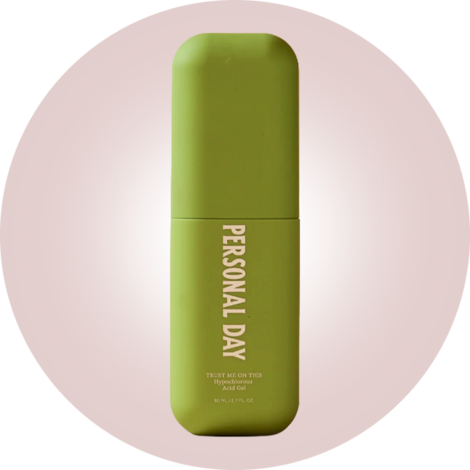You call them “moobs,” the hideous and juvenile portmanteau of “man” and “boobs.” I refer to them as “hevage,” which elegantly combines a male pronoun with the word “cleavage.” We are talking about the same thing, which doesn’t so much describe the male chest as the act of making it visible—or the reciprocal act of beholding it in public.
Men have been ditching their shirts since primordial times. Then civilization progressed in such a way that occupying its highest echelons meant putting on as many shirts as possible. One century ago, typical men’s fashion dictated shirts whose collars rose to graze the chin, especially for galas or operas. But at the most recent Academy Awards, several cisgender male guests showed up with shirts unbuttoned or nonexistent. Ryan Gosling, nominated for best-supporting actor as Barbie’s Ken, appeared handsome, stylish, and visibly hairless from cheekbone to sternum.
The chesty look has been a favorite among actors “since last year,” says Mira Chai Hyde, the “godmother of grooming,” who tends to clients such as Nicholas Galitzine and Shohei Ohtani. “Just like a female shows off her body on the red carpet, I think men are doing the same thing. They’re taking pride in how well they take care of themselves. Not just their bodies, but their skin too.”
Men have been ditching their shirts since primordial times. Then civilization progressed in such a way that occupying its highest echelons meant putting on as many shirts as possible.
At the Oscars, Hyde worked on another client, the actor Simu Liu, who wore a black Fendi suit that fastened with a jeweled closure and bared a tasteful triangle of flesh. “We’ve done low shirt, no shirt,” Hyde says, paging through the lookbook in her mind. “Didn’t we do a Fenty thing where we had no shirt at all?” We did: Liu walked the fourth Savage x Fenty runway in 2022 wearing nothing but a draped pant of molten pink silk. Hyde suddenly remembers it fondly. “I had to oil his whole body!”
With a chest-forward look, Hyde begins by prepping the skin “from face to navel” with Collosol, the milky cleansing toner from France. Depending on the desired level of shine, she’ll work a body lotion or oil into all visible skin. For a more matte finish, like Liu’s at the Oscars, a linen towel blots away anything extra. Especially on hairy chests, which can look more lustrous when less product is applied.
“There’s a new confidence in men on the carpet,” the stylist Holly White tells me. “They’re down to experiment and share a little bit of flesh, and I’m here for it.”
White has become a self-taught master of the male neckline. Her client list includes a cadre of young Netflix heartthrobs, whom she’s dressing in all manner of suits, layering them over generous scoops, plunging Vs, or negative space. “We’re looking at either replacing the shirt with a tank, we are going for sheer shirts, or we’re doing nothing at all,” she says.

White now maintains an encyclopedic knowledge of men’s tank tops. For a British Vogue party, she dressed the actor Luke Newton in a black Givenchy tank that reached demurely across the clavicle. But her favorite is a Tom Ford, which dips satisfyingly lower. “It’s a gorgeous black rib,” she says. “It’s giving.”
If one were to be written, a history of male cleavage might emphasize its origins as a by-product of ball play. It was the sport of cricket that gave us the V-neck sweater, dating back to the mid–19th century. And it was tennis that gave us the polo shirt, invented by a French Grand Slam winner named René Lacoste in the 1920s. But hevage didn’t enter mainstream fashion until the 1970s. At the first live televised Grammys, in 1971, the Osmond Brothers performed onstage in a quartet of Evel Knievel–looking fringed suits displaying chest hair of varied concentration.
Off the court or stage, baring one’s chest has been an expression of countercultural mores. It was punk when Iggy Pop did it in the 80s; it was hip when American Apparel sold their Deep V Neck, in the late 2000s. Bevy Smith, of Bravo’s Fashion Queens, told the New York Daily News that it was a great look for “hipster black dudes and sexy gay guys.” In Milwaukee, the local news covered the trend jokingly. The dress shirt has always been Establishment. Now the Establishment wants to show a little chest.
“Men want to look good, really starting from the top down,” says Lyle Leipziger, a plastic surgeon in New York. Anecdotally, he notes that more male patients are spending more time in the gym, as well as shaving their chests. He also notes that most of the men who have approached him about their chests have a form of gynecomastia, an abundance of breast or nearby fatty tissue.
Gynecomastia is sometimes related to hormones, which is why Leipziger often sends patients to an endocrinologist. The best surgical results for treating gynecomastia are achieved using two procedures: liposuction and removal of the breast tissue. “It’s usually a small incision, from about three, four o’clock to eight, nine o’clock,” Leipziger says. Patients return home the same day, wearing a compression vest.
While plastic-surgery procedures have seen growth in the past few decades—breast reductions of all genders appear to have jumped by more than 50 percent between 2019 and 2022, according to the American Society of Plastic Surgeons—gynecomastia reductions have been more or less stable. There were about 20,350 male breast reductions performed in the U.S. in 2000, and 20,725 in 2012; two years ago, we were up to only about 24,000.
Gynecomastia also can’t be reduced with exercise alone, and, in fact, that could enlarge the muscle beneath the gynecomastia, causing it to protrude farther. For everything else, there’s Tom Ford. In addition to its vaunted tank tops, Hyde recommends the brand’s bronzing gel (“For Men”) as a given for body contouring.
“It’s a favorite,” she says. A client like Liu, whose other professional obligations have demanded either Marvel- or Mattel-level musculature, doesn’t need much in the way of pectoral contouring. But Hyde concedes another trick to a popping chest: a short series of push-ups. Has she ever made a star drop and give her 20? She says, devilishly, “Absolutely.”
Brennan Kilbane is a New York–based writer. He is originally from Cleveland, and his interviews and essays have appeared in GQ, New York magazine, and Allure, where he was recently on staff as a features writer





